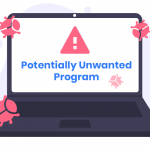In the intricate web of cyber threats, the Purchase Order And Tax Invoice phishing scam stands out as a cleverly designed scheme to extract sensitive information from unsuspecting individuals. Operating under the guise of legitimate business transactions, this phishing email preys on human trust, aiming to deceive recipients into divulging personal data and login credentials. Unraveling its complexities and understanding the implications becomes crucial to safeguard against its damaging consequences.
Understanding the Threat
This deceptive phishing email, often titled with subjects like “Re: MULTI-IMPACT RFQ/INQUIRY ORDER SGNR000087999,” cunningly masquerades as a genuine purchase order confirmation. It prompts recipients to review an attached purchase order and requests swift action—signing, stamping, and returning the order, alongside the submission of a Tax Invoice for payment processing.
The trap lies in the “Click To View” link embedded within the email, purportedly leading to a legitimate website but in reality directing victims to a fraudulent page mirroring trusted platforms like Yahoo sign-in pages. Once lured to this site, unsuspecting victims might unwittingly provide their email account login credentials, unknowingly granting scammers access to their inbox.
Consequences and Actions:
Once scammers acquire login credentials, they gain unauthorized access to the victim’s email account, enabling them to sift through sensitive information, financial details, and potentially compromise other linked accounts. This access grants them a foothold to perpetrate further phishing attacks on the victim’s contacts or carry out identity theft and illegal transactions, causing significant monetary and reputational damage.
Removal Guide
- Immediate Password Change: Upon suspecting or confirming such an attack, change the password of the compromised email account immediately.
- Scan for Suspicious Activities: Thoroughly review the account for any unauthorized activities, including forwarded emails or altered settings.
- Revoke Access: Check and revoke access to any third-party applications or services connected to the compromised email.
- Alert Contacts: Notify contacts about the potential security breach to prevent further spread of the scam.
- Monitor Financial Transactions: Keep a close eye on financial transactions for any unauthorized activities and report them promptly.
Prevention Best Practices
- Vigilance: Scrutinize emails meticulously, especially those involving unexpected attachments or urgent requests for personal information.
- Verification: Confirm the legitimacy of requests via alternate channels (phone calls, official website contacts) before taking any action.
- Educate and Train: Foster awareness among employees or family members about the nuances of phishing scams.
- Two-Factor Authentication (2FA): Enable 2FA wherever possible to add an extra layer of security to accounts.
- Regular Updates and Backups: Ensure systems, software, and security measures are regularly updated. Backup critical data to prevent data loss.
Similar Threats
Other prevalent phishing scams, like the “Invoice Payment Scam,” “CEO Fraud,” or “Account Verification Phishing,” operate on similar principles, aiming to deceive users through false urgency or official-looking emails to extract sensitive information.
In the ever-evolving landscape of cyber threats, proactive measures and a cautious approach serve as shields against potential attacks. Staying informed, adopting robust security practices, and remaining vigilant form the cornerstone of defense against such malicious schemes.





